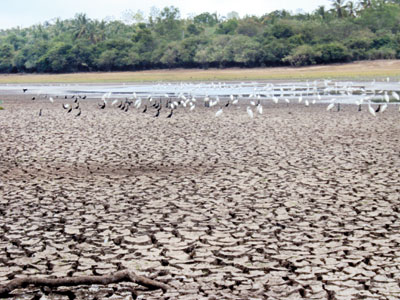Modern Mercantilism
View(s):All of us would like to see Sri Lanka’s exports growing. For that matter, we want other countries to open their markets for our exports; if possible they can even grant us some concessions like GSP +. We appreciate the EU and the US for extending the GSP + and other concessions for Sri Lanka. However, at least for some of us – I believe there are many- the flip side of international trade is different. There are those who would like to see curbs on imports; that we should not open our market for exports from other countries, although we want their markets open for us.
Trade hypocrisy
It might be surprising and even embarrassing to know what the US has to say about Sri Lanka’s tariff regime, while extending the GSP concessions to Sri Lanka. The following is the way that International Trade Administration of the US Department of Commerce provides advice to their exporters who consider exporting to Sri Lanka:
“Sri Lanka imposes a variety of import duties, which combined can result in high duty rates. US exporters should be aware that fees incurred when exporting to Sri Lanka include the customs-import tariff, Export Development Board levy, Value Added Tax (VAT), Port and Airport tax, Nation Building Tax, Port Handling charges, and agent commissions, all of which could add up to more than 100 per cent of the cost-plus-insurance-plus-freight (CIF) value for items at the higher tariff bands. The Embassy has received complaints from U.S. exporters regarding this “prohibitive” tariff regime.” [Source: https://www.export.gov/article?id=Sri-Lanka-Import-Tariffs]
We want others to follow “open market” policies for us, but also want “closed market” policies for them. The two ideas, taken separately look sincere and patriotic. But actually they are hypocritical, when they are put together. Apart from this moral issue, we might easily get caught up in our own argument when we want to believe in a strategy of export promotion plus import protection.
This economic sentiment, which is known as a “mercantilist idea” is, however, not a new thing. It is historical and global. With recent global economic crises and the new US trade policies, the old mercantilism has been gaining momentum, opening the door for a new global economic rivalry.
Medieval mercantilism
Mercantilism, as it was called by the Scottish Economist, Adam Smith who attacked it in his pioneering book Wealth of Nations (1776), prevailed in Europe during 1600s – 1800s. It was the dominant economic perspective of the then European businessmen who believed that the economic power of a nation should be built up by maintaining a positive trade balance; that is, exporting more and importing less. Because international payments were in gold, exporting more and importing less would keep the country’s gold stock growing. It was the sign of increasing economic power of a nation state.
The contemporary economic policies in Europe were based on this mercantilist ideology: It would ensure always a positive trade balance by exporting more and importing less.
One might ask a simple question: When every nation is trying to export to other countries and not to import from other countries, wouldn’t world trade diminish and come to an end? The answer is clear if you look at European Mercantilism in the context. It was the time of European expansion and colonization over the rest of the world so that a few European nations were able to sustain Mercantilism.
Old mercantilism withered away after 1800s, and free trade gained momentum up this date. We are in a different world now. But we still hear that a modern version of Mercantilism has revisited from both political and business grounds.
Modern mercantilism
Modern mercantilism has two aspects as individualist and nationalist dimensions. A producer of a particular commodity might demand for protecting his particular product from competing imports. This is good for that particular producer at least temporarily, but bad for the economy as a whole. It is good for the producer because it keeps him from competition and efficiency with a guaranteed market. It is bad for the economy because, on the one hand the consumers have to pay for it with higher prices. On the other hand, industrial expansion and economic growth would be retarded.
The flip side is that the same producer under different circumstances might have to take a contradictory ideological position:
If he starts exporting the product he will choose the “open market” economies where he can easily get into business. If he has to import a part or a raw material which has come under tight import controls, now his own protectionist idea might be an obstacle to his own production; perhaps, he might consider moving his business to a more open economy where there is less import protection.
I should also emphasise that competitiveness and efficiency of production is determined by not only the degree of import controls. This is a result of multiple factors, while the quality, quantity and cost of many other inputs will affect it.

A drought-affected paddy field. Local producers want protection against cheap imports while exporters want less protection in their source markets.
Nationalist dimension
Nationalist dimension of mercantilism is the development strategies based on mercantilist ideology, anticipating that it is the road to prosperity. Countries having trade deficits are often seen pointing fingers at the lack of import controls. This is a familiar case for us in Sri Lanka too, as we have a persistent trade deficit.
I don’t think Sri Lanka is a country with an “open economy” because we have tariffs, para-tariffs, and domestic taxes on imports on the one hand, and numerous and complicated taxes and tax mechanisms on the other hand.
In fact, sometimes I wonder why we introduce Sri Lanka as an open economy. It may be comparable with South Asian standards, but Sri Lanka’s competitive position as an established “open economy” in the Asian region has eroded over the years.
While Sri Lankan government collects about 18 per cent of its revenue from taxes on international trade, it is 2 to 3 per cent in most of the Asia countries, listed in the above table. Singapore and UK have zero per cent share in taxes on international trade, and in the US it is only one per cent. This shows that, despite rhetoric, Sri Lanka is not so open; you may compare Sri Lanka with other South Asian countries, but not with fast-growing export-oriented economies in East Asia.
Wrong diagnosis
Let me give the economic explanation of Sri Lanka’s trade deficit; in short, I would call it “living beyond means”. This means that Sri Lanka has a trade deficit because our aggregate demand – mainly consumption expenditure and government expenditure, exceeds the level permitted by our income (GDP). It is similar to saying that when you keep spending more than what you earn, it is reflected through your growing loans.
Let me also elaborate another valid point here. Economic growth can be influenced either by growing exports or by growing government expenditure:
- The countries which were able to sustain the former (growth influenced by exports), are able to maintain healthy trade performance and sound government budget; many East Asian countries fall under this category.
- The countries which used to push their economic growth through government expenditure gradually plunge into the problem of both trade deficit and budget deficit; Sri Lanka falls under this category.
It is absurd to address the problem of trade deficit with mercantilist policies; it is based on a wrong diagnosis. Neither would such policies bring prosperity to the country. What is needed for Sri Lanka is to make a decisive shift from the latter to the former group of countries – from fiscal expansion to trade expansion as the driving force of sustainable economic growth.
(The writer is Professor of Economics at the University of Colombo. He can be reached at sirimal@econ.cmb.ac.lk).
| Taxes of International Trade as % of Government Revenue | |
| China … 2.8 Indonesia … 2.8 Japan … 1.5 South Korea … 2.0 Malaysia … 1.7 Thailand … 3.3 Singapore … 0.0 India … 13.2 Sri Lanka … 17.8 UK … 0.0 USA … 1.0 South Asia (average) … 16.7 East Asia & the Pacific (average) … 2.7 Source: World Development Indicators Note: Figures are for the latest year as available, while for most of the countries it is for 2016. |


